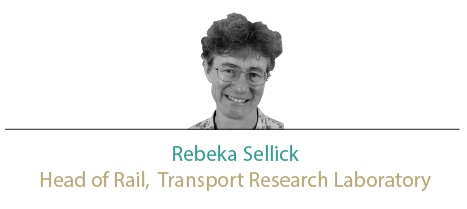
What is Transport for?
Nearly 30 years ago, after joining British Rail (whose transport business once extended to hotels and household removals), I wrote my engineering and economics masters thesis entitled Painting European Transport Green. Transport was for ‘good’, I argued - providing financial and social benefit to humankind. Thus more transport should be delivered, albeit more sustainably.
What’s changed?
Paul Clifton shares some statistics since the 1980s: bus journeys doubling (in London, but falling elsewhere); rail passenger miles doubling in the past 20 years (despite 25% real terms fares increases); car travel levelling off since the 1990s. He offers some insights from transport bodies such as TfN, ITC and the RFG, plus the automotive and university sectors.
What’s missing?
It’s a huge topic, so Paul cannot be all-encompassing, although omitting light rail is surprising. These ‘re-invented tramways’ have unlocked significant modal shifts from private cars into public transport, as have premium bus services elsewhere. He mentions freight (several topics in itself), but not air, despite the clear success of Eurostar having captured the Paris-London market.
Is he right? What role should rail take in future transport?
Looking at demand trends, the demographic direction of domestic travel is towards reducing car ownership and increasing public transport use. But with connected aspirations rising, will rail growth really be sustained as cars become autonomous? Self-driving cars could offer users something like the pleasant and useful on-board space of a train, with the added bonus of flexibility and privacy. They may even better rail’s green credentials, with shorter automotive vehicle lifecycles facilitating rapid exploitation of all-electric renewable energy sources, minimising adverse air quality impacts.
Technology now, and on the horizon
Lord Berkeley rightly identifies the challenge for freight trains to travel as fast as passenger trains, prompting electrification and infrastructure investment. But they also need to stop as fast to reduce their capacity footprint. Promising cost-effective digital solutions are being developed and trialled (presented to the 2017 IMechE Stephenson Railway Research conference).
Simple non-invasive apps conveying information and price incentives could optimise the more efficient use of rolling stock. They straightforwardly encourage greater use of spare capacity in existing trains, so more passengers benefit from the same km run. Extending this beyond the railway could embrace autonomous vehicles for connected door-to-door transport: joining with rail’s ‘competitor’, rather than trying to beat them. The live debate is whether this is best market-led or directed by a guiding mind…
Future connected transport – the long-term plan
Rail’s capacity and overall energy advantages remain in volume: from the efficient aggregation of individual passenger journeys to the delivery of bulk freight, addressing transport’s capacity challenges. Transport can drive economic growth through access to education, skills development, jobs, resources, markets. The challenge for the railway industry is indeed to adapt, so that we grow and become a more cost-effective and significant transport provider.











